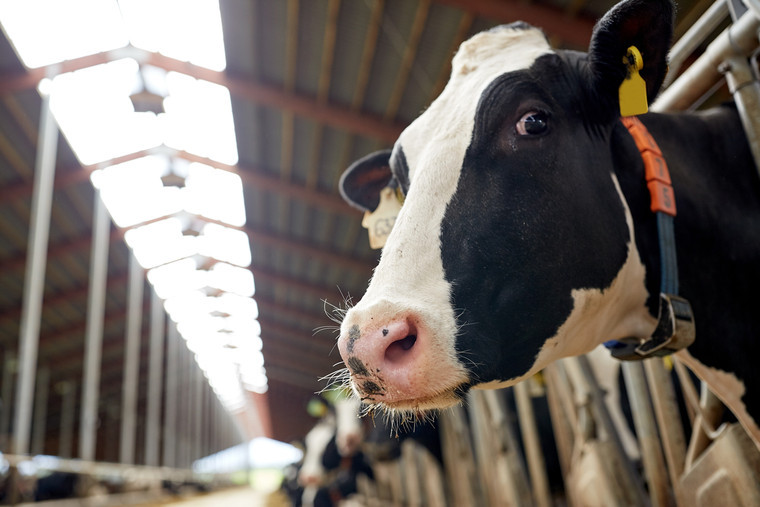Good planning to ensure herds are up to date with vaccinations and other routine treatments can prevent production losses over the winter, writes Emily Collins-Winagte BVMSci MRCVS, Westpoint Horsham.
Closer contact between animals, reduced ventilation and damp environments can create a ‘perfect storm’ for viral replication and disease in cattle. Many different vaccines exist but a few key principles underpin the success of any vaccination protocol: timing of the doses, vaccine storage and vaccine administration.
Most vaccinations should be given when cattle are healthy, to ensure a successful prolonged immune response is stimulated. Vaccinations should be planned to ensure maximum protection for cattle when they are most at risk from disease. For some vaccines this can require two vaccine doses followed by a period of several weeks before immunity develops. The datasheet for vaccines should be checked both for the details of these timings and if wanting to use them in pregnant animals.
It is important to check how vaccinations should be administered – usually intramuscularly, intranasally or subcutaneously. Cleanliness is important to reduce the risk of introducing infection at the vaccination site and to ensure efficacy of the vaccine given.
Bovine viral diarrhoea (BVD)
Vaccines for BVD have been available for over 15 years, but the disease is still commonly found on UK farms. Recent testing schemes, such as BVD Stamp It Out, have raised the profile of this disease, with more farmers aware of the disease status of their herd. The main motivation for vaccinating against BVD is to prevent persistently infected (PI) calves being born. PI calves are created when dams are infected with BVD in the first trimester. These calves will continually shed virus throughout their life, so will spread disease to the rest of the herd.
There are two types of BVD; type-one is the most common, but type-two has also been identified in the UK. Some BVD primary vaccination programmes require two doses, but there is a single-shot primary course available now. Annual, or biannual, boosters are required, the details of which should be checked on the vaccine datasheet.
To ensure full protection against BVD, cattle must have completed the primary course before their first service. The timing of administration should aim for full protection several weeks before the service date, to ensure foetal protection and prevent the production of PI calves.
Infectious bovine rhinotracheitis (IBR)
IBR is a highly contagious viral infection caused by a herpes virus. Once infected, the animal remains infected for life and may spread the virus intermittently during times of stress or immune suppression. Around 40% of farms in the UK are thought to have IBR present. There are multiple vaccines available, with inactivated ones generally better at producing longer-term immunity. Live vaccines have a rapid onset of immunity, so can be used in a disease outbreak scenario to create immunity quickly.
Marker vaccines are now available which enable vaccinated and naturally infected animals to be differentiated through laboratory testing.
Pneumonia vaccinations
There are several vaccines available against common respiratory pathogens, marketed in various combinations. The common viral causes of pneumonia in cattle include infectious bovine rhinotracheitis, parainfluenza virus-3, respiratory syncytial virus and bovine viral diarrhoea.
Many of the pneumonia vaccines commonly used are multivalent – providing protection against multi-agent diseases. They may also include protection for single-agent diseases such as BVD or IBR. These vaccines often require six-monthly boosters, so it is important to plan accordingly to ensure year-round protection. Some of the vaccines used in calves to protect against common causes of pneumonia should be repeated after six months, which may coincide with the housing period.
It should be factored into planning that some pneumonia vaccinations may need to be started before housing, to give enough time for second doses and full immunity to develop before cattle are moved inside.
While vaccinations are available and useful, they are only one part of a preventative programme for respiratory disease in adult cattle. Considerations about space per animal, ventilation and protection from inclement weather are also incredibly important.
This list of vaccines that can be used at housing is not exhaustive; others may fit with your cattle management plan. Protocols should be discussed with your vet to ensure time and money are not being wasted through incorrect use of vaccines. This element of disease control is most useful when tailored to the specifics of your farm, therefore a better understanding of a herd’s disease status, through sampling and testing, creates the most effective vaccine protocol.




